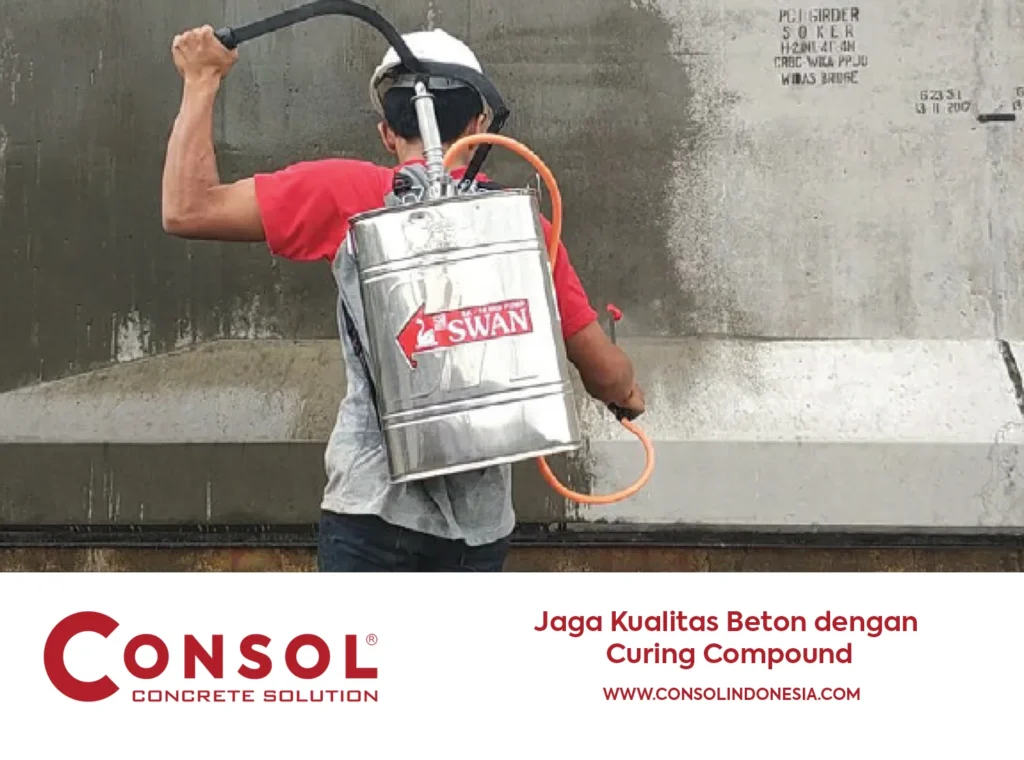In today’s construction industry, the application of curing compound has become a standard practice across various projects, including roadwork, building construction, and hydraulic structures. As a fundamental element in any construction endeavor, ensuring the quality of the placed concrete is paramount. This necessitates careful consideration of several key aspects: the design of the concrete mix proportions, the concrete placement methods, and the post-placement concrete care, commonly known as curing.
The Advantages of Using Curing Compound
- What is Curing Compound?
- How Critical is the Concrete Curing Process?
- When Should Curing Compound Be Applied?
- What are the advantages of Using Curing Compound?
- How to Select the Appropriate Curing Compound?
What is Curing Compound?
Curing compound is a liquid substance applied as a surface coating to freshly poured concrete. This protective film plays a vital role in retaining the concrete’s temperature and moisture levels, thereby enabling the optimal progression of the concrete setting process.

How Critical is the Concrete Curing Process?
The concrete curing process is of utmost importance. Neglecting to cure concrete properly can lead to premature deterioration due to exposure to water, heat, cold, and foot traffic. The primary objective of curing is to safeguard the concrete during its critical setting phase, ensuring that the desired concrete properties are achieved and minimizing excessive volume changes that can result in extensive surface cracking. The effectiveness of the curing process has a significant impact on the hardened concrete, influencing its strength, durability, water-tightness, surface abrasion resistance, and dimensional stability, which is directly related to shrinkage and expansion and consequently, cracking.
When Should Curing Compound Be Applied?
Curing compound should be applied shortly after the concrete placement. The general guideline is to apply it as soon as the bleed water sheen disappears from the concrete surface. Applying it prematurely can impede or halt the evaporation of bleed water, causing it to become trapped beneath the curing compound membrane or mix with it. This can compromise the integrity of the curing compound layer, potentially leading to reduced performance during the final curing period. Such damage may manifest as visible cracks or tears in the membrane. In some instances, the damage might only be detectable under moderate magnification. However, under mild drying conditions (e.g., <0.5 kg/m²/hour), these occurrences may not have significant detrimental effects.
What are the Advantages of Using Curing Compound?
- Facilitates early curing by allowing application immediately after the disappearance of bleed water and the surface sheen.
- Available in solar-reflective colors, which help to mitigate surface heat buildup through reflection.
- Offers a practical solution in locations where water resources are scarce or unavailable for traditional curing methods.
- Suitable for application on vertical concrete surfaces, expanding its versatility.
- Presents a more effective, efficient, and economical alternative compared to labor-intensive curing methods such as wet burlap, plastic sheeting, and water ponding.
How to Select the Appropriate Curing Compound?
Consol provides a comprehensive range of high-quality curing compound products. Reach out to us for expert assistance in identifying the product that best aligns with your specific project requirements. You can conveniently purchase Consol products online via Tokopedia.
We also invite you to read our other informative article on concrete hardening additives: Concrete Hardening Additive for Residential Buildings.


